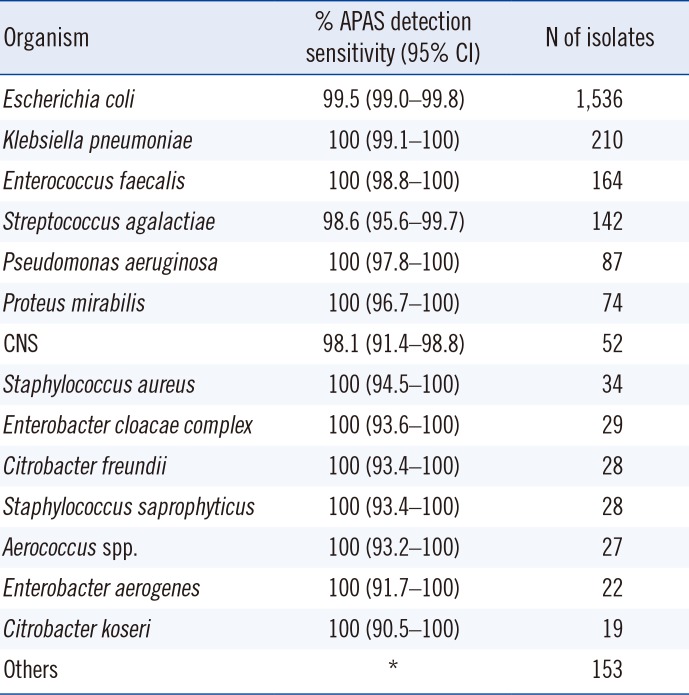1. Bourbeau PP, Ledeboer NA. Automation in clinical microbiology. J Clin Microbiol. 2013; 51:1658–1665. PMID:
23515547.
2. Ledeboer NA, Dallas SD. The automated clinical microbiology laboratory: fact or fantasy? J Clin Microbiol. 2014; 52:3140–3146. PMID:
24648549.
3. Mutters NT, Hodiamont CJ, de Jong MD, Overmeijer HPJ, van den Boogaard M, Visser CE. Performance of Kiestra total laboratory automation combined with MS in clinical microbiology practice. Ann Lab Med. 2014; 34:111–117. PMID:
24624346.
4. Rhoads DD, Novak SM, Pantanowitz L. A review of the current state of digital plate reading of cultures in clinical microbiology. J Pathol Inform. 2015; 6:23. PMID:
26110091.
5. Miyazawa K, Kobayashi K, Nakauchi S, Hiraishi A. In situ detection and identification of microorganisms at single-colony resolution by spectral imaging. Opt Rev. 2008; 15:285–291.
6. Yoon SC, Lawrence KC, Line JE, Siragusa GR, Feldner PW, Park B, Windham WR. Detection of vv colonies using hyperspectral imaging. Sens Instrumen Food Qual Saf. 2010; 4:35–49.
7. Faron ML, Buchan BW, Vismara C, Lacchini C, Bielli A, Gesu G, et al. Automated scoring of chromogenic media for detection of methicillin-resistant Staphylococcus aureus by use of WASPLab image analysis software. J Clin Microbiol. 2016; 54:620–624. PMID:
26719443.
8. Glasson J, Hill R, Summerford M, Giglio S. Evaluation of an image analysis device (APAS) for screening urine cultures. J Clin Microbiol. 2016; 54:300–304. PMID:
26582838.
9. McCarter YS, Burd EM, et al. Sharp SE, editor. Cumitech 2C, Laboratory diagnosis of urinary tract infections. Washington, DC: ASM Press;2009.
10. Kouri T, Fogazzi G, Gant V, Hallander H, Hofmann W, Guder WG, editors. ECLM. European urinalysis guidelines. Scand J Clin Lab Invest. 2000; 60(S231):38.
11. Grude N, Tveten Y, Kristiansen BE. Urinary tract infections in Norway: bacterial etiology and susceptibility. A retrospective study of clinical isolates. Clin Microbiol Infect. 2001; 7:543–547. PMID:
11683794.
12. Karlowsky JA, Lagacé-Wiens PR, Simner PJ, DeCorby MR, Adam HJ, Waltky A, et al. Antimicrobial resistance in urinary tract pathogens in Canada from 2007 to 2009: CANWARD Surveillance Study. Antimicrob Agents Chemother. 2011; 55:3169–3175. PMID:
21537027.
13. Kahlmeter G. ECO.SENS. An international survey of the antimicrobial susceptibility of pathogens from uncomplicated urinary tract infections: the ECO.SENS Project. J Antimicrob Chemother. 2003; 51:69–76. PMID:
12493789.
14. Zhanel GG, Hisanaga TL, Laing NM, DeCorby MR, Nichol KA, Palatnick LP, et al. Antibiotic resistance in outpatient isolates: final results from the North American Urinary Tract Infection Collaborative Alliance (NAUTICA). Int J Antimicrob Agents. 2005; 26:380–388. PMID:
16243229.
15. Gupta K, Scoles D, Stamm WE. Increasing prevalence of antimicrobial resistance among uropathogens causing acute uncomplicated cystitis in women. JAMA. 1999; 281:736–738. PMID:
10052444.
16. Murray PR, Niles AC, Heeren RL, Pikul F. Evaluation of the modified Bac-T-Screen and FiltraCheck-UTI urine screening systems for detection of clinically significant bacteriuira. J Clin Microbiol. 1988; 26:2347–2350. PMID:
3235661.
17. Manoni F, Fornasiero L, Ercolin M, Tinello A, Ferrian M, Hoffer P, et al. Cutoff values for bacteria and leukocytes for urine flow cytometer Sysmex UF-1000i in urinary tract infections. Diagn Microbiol and Infect Dis. 2009; 65:103–107. PMID:
19748419.
18. Jolkkonen S, Paattiniemi EL, Kärpänoja P, Sarkkinen H. Screening urine samples by flow cytometry reduces the need for culture. J Clin Microbiol. 2010; 48:3117–3121. PMID:
20592157.
19. Dauwalder O, Landrieve L, Laurent F, de Montclos M, Vandenesch F, Lina G. Does bacteriology laboratory automation reduce time to results and increase quality management? Clin Microbio Infect. 2016; 22:236–243.







 PDF
PDF ePub
ePub Citation
Citation Print
Print


 XML Download
XML Download